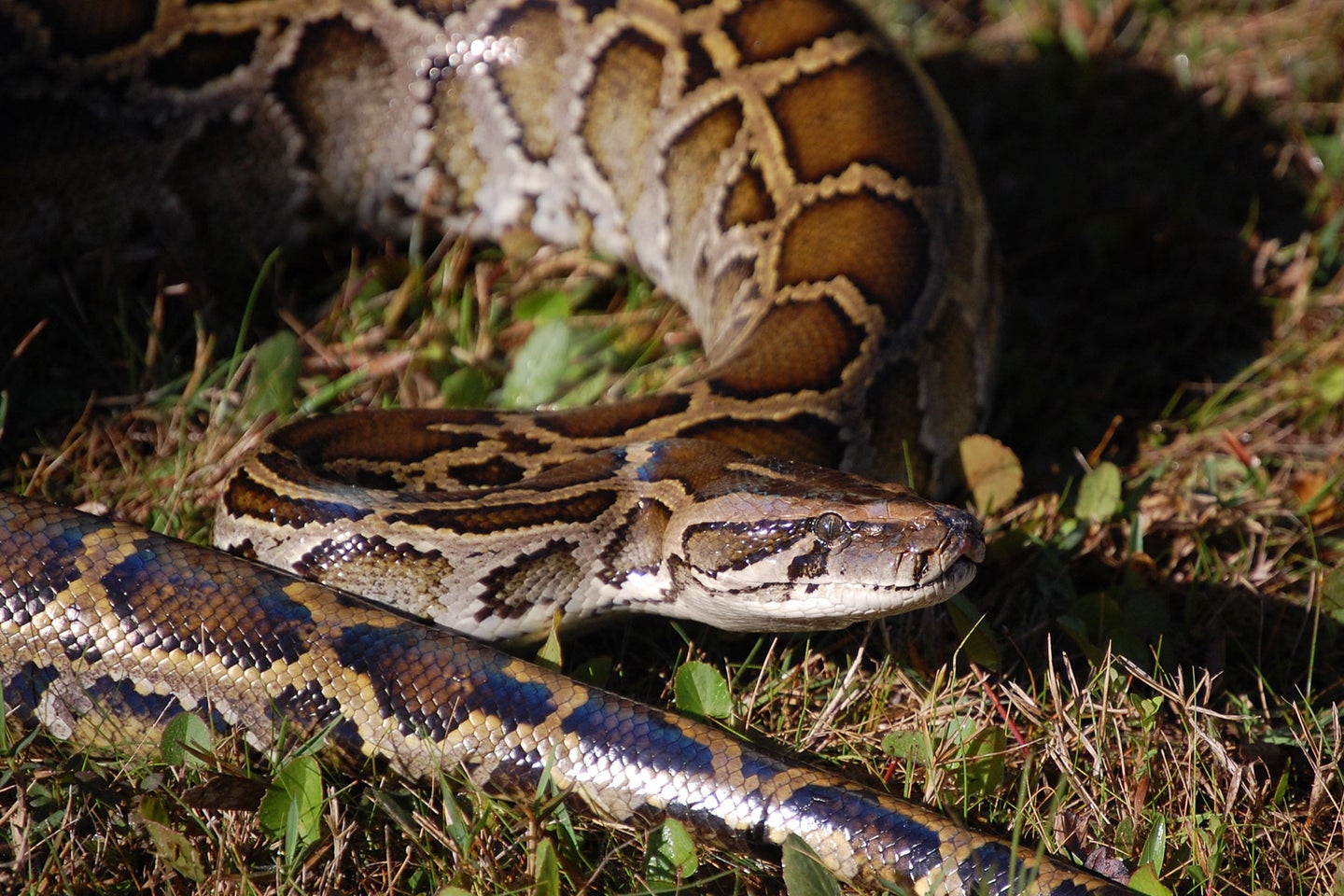Are Florida’s Invasive Pythons Adapting to Survive Colder Temperatures?

Florida’s python invasion may be even tougher to control than previously thought, according to findings outlined in a recent report from the United States Geological Survey (USGS) that rounds up everything scientists have learned about the non-native species that is overrunning the delicate Everglades ecosystem.
Among the key points in “Burmese pythons in Florida: A synthesis of biology, impacts, and management tools” is the revelation that some Burmese pythons may be better at surviving cold temperatures than commonly thought.
Since pythons were first discovered in Florida in the 1970s, they have multiplied and spread rapidly throughout the southern part of the state, severely reducing mammal populations in the Everglades National Park. A 2012 study found that raccoon populations dropped 99.3 percent, opossums 98.9 percent, and bobcats 87.5 percent since 1997. Rabbits and foxes were effectively wiped out.
Lacking any natural predators in North America, the southeast Asian native’s spread has been checked only by human predation and by the snake’s intolerance of cold temperatures. Records from the pet trade, thought to be the source of the introduction, indicate that most of the pythons imported in the 1970s came from Vietnam and Thailand. But genetic sampling of pythons captured in the Everglades has found traces of Indian python DNA in a small percentage of the Florida snakes.
In parts of northern India, where temperatures are much colder than in Vietnam and Thailand, studies have shown that the snakes use underground refuges such as porcupine burrows to ride out the winter. A 2010 study found that some pythons in south Florida also used underground refuges to survive an unusually harsh cold snap that gripped the state that year. Those survivors have passed on their DNA to subsequent generations of Florida snakes.
Ian Bartoszek, a biologist and python expert at the Conservancy of Southwest Florida, recently told the Fort Myers News-Press that he is concerned that some invasive pythons may have genetic traits that make it easier for them to adapt to conditions in Florida, including a higher tolerance for cold weather that might make it possible for the snakes to spread north.
Related: Florida Snake Hunter Bags 16-Foot Burmese Python Loaded with 60 Eggs
“Some are better at hiding and getting down in burrows and can wait out cold events, they’re adapting to South Florida’s habitats, and the burrows may afford them some level of protection,” Bartoszek said. “I think now that they’re here in the wild there are selection events that are flipping the switches in those species.”
According to the study, eradication of Florida’s notorious problem snakes is likely impossible. But the authors seem hopeful that their findings will fill in key knowledge gaps that could ultimately “improve future research and decision making for python control.”
The post Are Florida’s Invasive Pythons Adapting to Survive Colder Temperatures? appeared first on Field & Stream.
Articles may contain affiliate links which enable us to share in the revenue of any purchases made.
